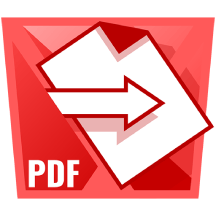Example uses of the approval process
With the growth of the company, comes a moment when standardization of the approval process becomes necessary. It could be a moment, when different people are responsible for the decision and realisation, or when reaching each approver becomes too time-consuming. The approval process can be carried out in an outdated way - with emails, PDFs, Word documents, or at worst, on paper… But luckily we can use approval management apps like Approval Path for Jira and Approval Path for Confluence to improve the process.
Use Cases
Invoice

Invoices are commonly received by companies, from many sources. The approval process for an invoice can be simple and involve only one approver before accepting, or can contain more steps. For example - a person responsible for payments may need accuracy confirmation. Also, the financial department may need to check taxes or international laws before paying the invoice
Control over expenses

Funds in the company must be under constant control and often several people influence the decision about expenses. But how approval can help? For example, an employee requests a course, book or training and starts an approval path. Teams have a training budget so after a request another person must check available funds and justification whether the request is actually reasonable.
Asset management

If there is a need to replace hardware, an employee might rise a Jira ticket with details and the cause of the fault if it’s known. Next, using a Jira Asset Management app, choose equipment or request to purchase a new one. In this case, the approval process may include diagnosis, manager, and the person responsible for finances (if a new purchase is needed). If the path ended successfully, a new Jira ticket assigned to an IT department employee, with a hardware replacement request could be raised automatically.
Content acceptance

All kinds of content may require approval - articles, graphics, videos and more. For example, the company wants to introduce a new product to the market, e.g. a new type of coffee, and a new packaging design is needed. Content created by a graphic designer needs to pass the branding person’s approval. Formalised approval path can also be the basis for the creator’s payment.
Business travels

The approval processes for business travels can be used in two contexts. The obvious one is approval - since many people have to consent
to the employee’s travels, an approval management app can make this more efficient. For example, if an employee has to go on a foreign
business trip, then it would require a permit from several people like someone from the financial department and branch managers.
Another context is organise. Different people may be responsible for different things: booking flights, hotels, renting cars.
Every matter can be a separate step in the approval path.
Vacation and days off

When an employee applies for leave or a day off, it may require HR and a team leader or team manager’s permission. When the approval path is formalized in the system there is no risk of confusion in case priority depends on the order of entries.
Pros and cons
To sum up, who will benefit from using an approval management app?
- The person who makes the request and starts approval, because the possibility of checking the current status allows speeding up if it gets stuck at any step,
- definitions creator - the approval process is formalized,
- approvers who may request more information and data in Jira comment and can see the current status and full path,
- the person at the end of the path who carries out the order. Formalized approval ensures that realization can be started.
Like all solutions, it also has some drawbacks and limitations:
- lack of flexibility - sometimes some steps could be skipped,
- path can’t be edited during execution. This may be a disadvantage but is designed in such a way, to make people who are on the path sure who else will decide,
- large number of definitions may make it difficult to find the appropriate one.






